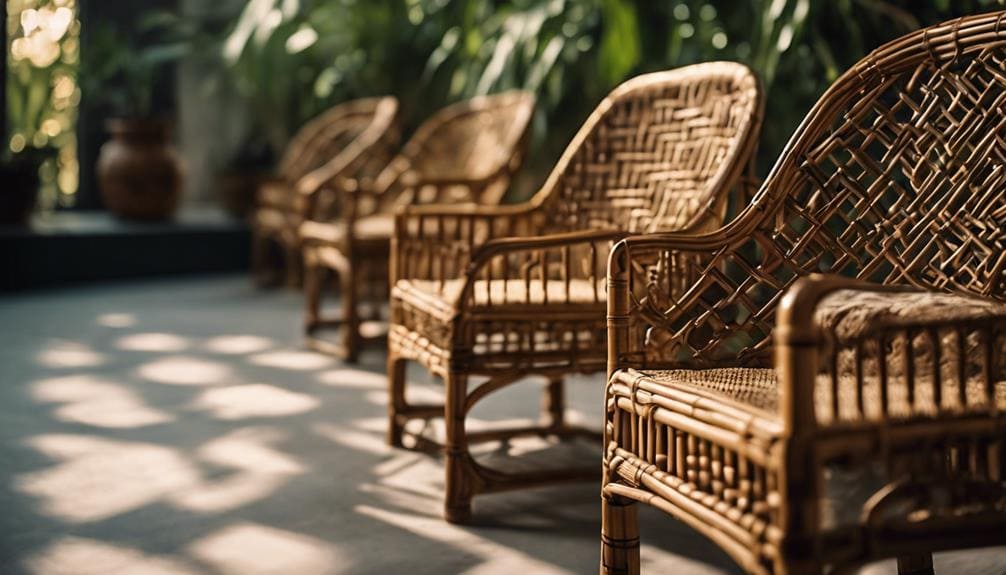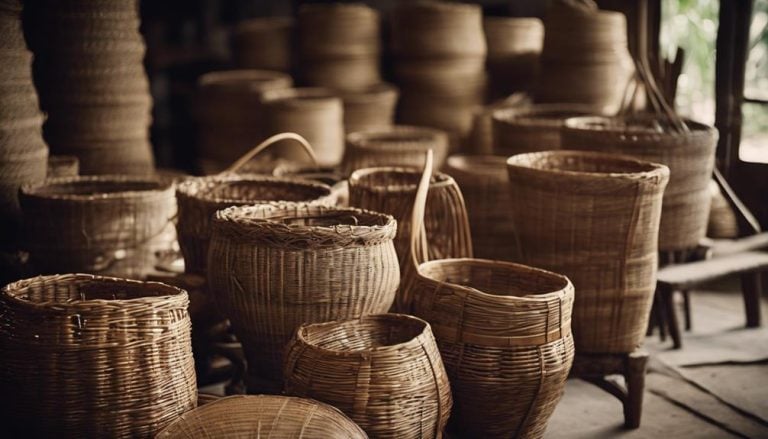Rattan Cane Weaving: History and Types
Exploring the depths of history, tracing the evolution of art forms, and unraveling the mysteries of ancient crafts have always fascinated me, particularly when it comes to rattan cane weaving. This craft's journey from the tombs of ancient civilizations to the modern-day living room is not just about furniture but a story of survival, adaptation, and elegance. With its roots deeply embedded in history and branches spreading across various cultures and techniques, I find myself intrigued by how this seemingly simple method of weaving thin strands of rattan into durable, stylish furniture pieces reflects broader themes of sustainability and artistry. As we peel back the layers of its rich history and diverse types, there's a world of craftsmanship and innovation waiting to be explored further.
Key Takeaways
- Rattan cane weaving has evolved from ancient burial artifacts to a globally revered furniture design technique.
- Techniques vary from intricate hand caning to machine and porch cane weaving, showcasing a range of craftsmanship.
- The art balances traditional skills with modern adaptations, including sustainability and contemporary design integration.
- Types of rattan weave include Traditional Hand Caning, Spline Caning, Cane Webbing, and Porch Cane, each offering distinct aesthetic and durability.
Ancient Origins and Evolution
The origins of cane furniture trace back to ancient times, with evidence of its use in Egyptian and Peruvian burials, marking the beginning of its long and evolving history. This evolution reflects not just a change in design styles, but also a testament to the adaptability and resilience of cane as a material. Throughout centuries, cane furniture has been shaped by various cultural influences, evolving to meet the demands of different eras.
By the 19th century, its popularity surged for its lightness and durability, qualities that were highly prized in furniture design. The revolution came with Thonet's No. 14 chair, a piece that not only showcased cane's aesthetic appeal but also its practical benefits. This innovation was a turning point, demonstrating cane's potential beyond traditional uses.
As cane furniture spread to European colonies, it adapted to new environments, its resistance to warping and cracking making it ideal for humid climates. Modern designers, like Le Corbusier, further endorsed cane for its health benefits and lightness, integrating it into modernist designs. This journey showcases cane furniture's remarkable ability to blend tradition with innovation, influenced by diverse cultures and evolving through time.
Cultural Significance Worldwide
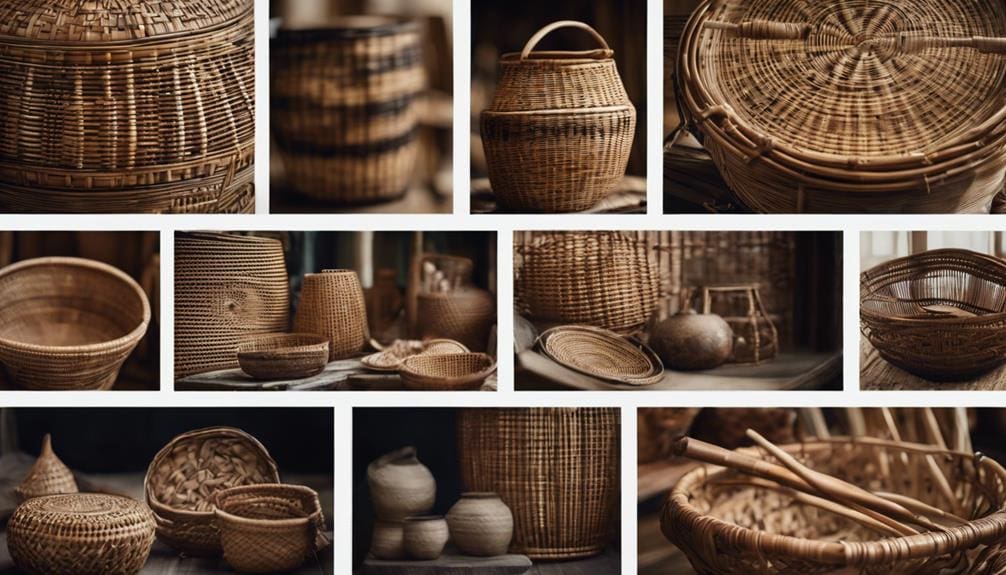
Exploring the cultural significance of rattan cane weaving reveals its profound impact on global furniture trends, from the intricacies of traditional craftsmanship to its role in the avant-garde movements of the 20th century. The journey of woven seats, particularly chair caning, underscores a rich tapestry of global impact and historical traditions that have shaped the way we perceive and utilize furniture today.
- Global Trade since the Late 1600s: Chair caning emerged as a significant global trade, influencing furniture styles across continents.
- Popularity in England and France: In the 1700s, the cultural significance of woven seats blossomed, becoming a hallmark of refined taste in Europe.
- Revival by the Bauhaus and Mid-Century Modern Design: These movements rekindled interest in the art of caning, integrating it into modern aesthetics and showcasing its versatility.
- Contemporary Design Innovations: Today's designers blend traditional cane with materials like bark and Shaker tape, underscoring its adaptability and ongoing relevance.
This exploration into rattan cane weaving's cultural significance worldwide highlights its enduring legacy and continual evolution, reflecting a deep respect for historical traditions while embracing the possibilities of future innovations.
Diverse Techniques of Weaving
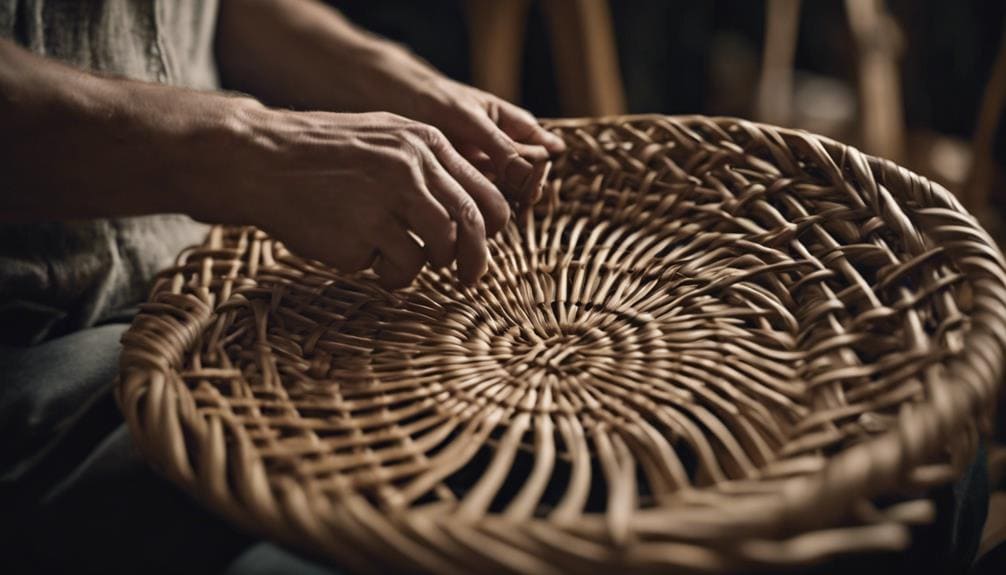
Delving into the realm of rattan cane weaving, I find the array of techniques employed both fascinating and indicative of the craft's adaptability through time. The diverse methods, from hole-to-hole hand caning to spline or machine caning, and porch cane or wide binding cane caning, showcase an evolution that harmoniously blends artisan craftsmanship with sustainability.
Hole-to-hole hand caning stands out for its intricate approach, where cane strands are meticulously woven through drilled holes in a chair seat, embodying traditional skills fostered over generations. In contrast, spline or machine caning, utilizing pre-woven panels, offers a nod towards contemporary design, marrying efficiency with aesthetic appeal. Porch cane weaving, with its double layer technique, caters to larger pieces, highlighting the versatility of rattan in different forms.
Yet, the scarcity of skilled repairers underscores a pressing need to cherish and perpetuate these techniques. It's a call to action to preserve the delicate balance between traditional skills and contemporary design, ensuring the longevity of this exquisite form of artisan craftsmanship.
Major Types of Rattan Weave
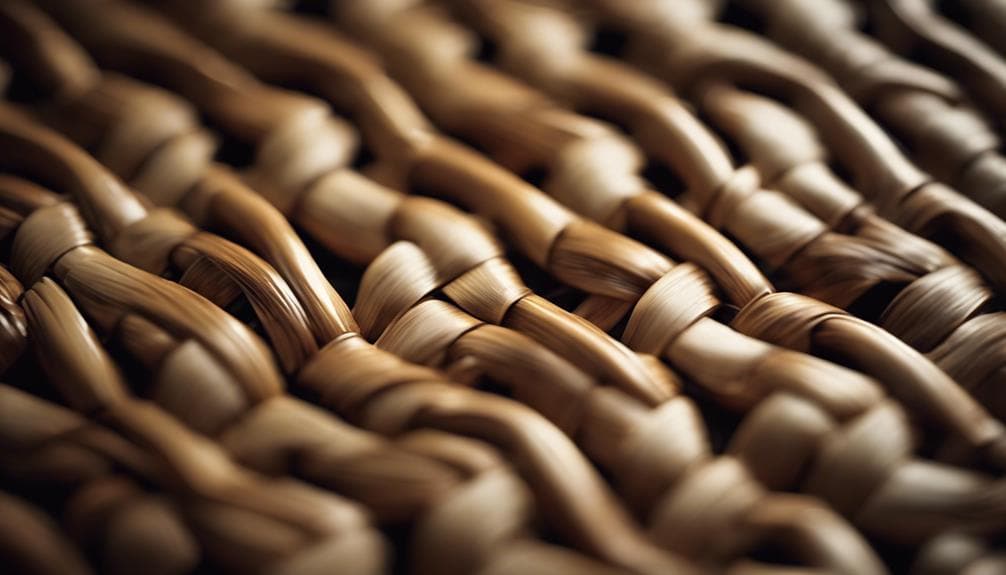
Rattan's versatility shines through the major types of weave, each offering unique aesthetics and levels of intricacy tailored to various furniture styles and preferences. Delving into the materials comparison and weaving process reveals a fascinating landscape of design versatility, alongside practical maintenance tips to ensure longevity.
- Traditional Hand Caning: This method, involving individual strands woven through drilled holes, stands out for its craftsmanship and detail. It's labor-intensive but results in a piece that's both beautiful and structurally sound.
- Spline Caning (Machine Caning): Utilizing pre-woven sheets inserted into a groove, it's a quicker alternative that doesn't compromise on style. Its appeal lies in the balance between traditional aesthetics and modern efficiency.
- Cane Webbing: Here, larger, open patterns are created, offering a distinct look. This method bridges the gap between intricate hand caning and the streamlined process of spline caning, offering a unique texture and visual appeal.
- Porch Cane (Wide Binding Cane): Designed for double-layer weaving, it provides unmatched durability. The choice for outdoor furniture, it withstands wear while maintaining its timeless elegance.
Each type presents its own set of challenges and rewards, from the intricate dance of the weaving process to the satisfaction of preserving these pieces with regular maintenance.
Modern Adaptations and Uses
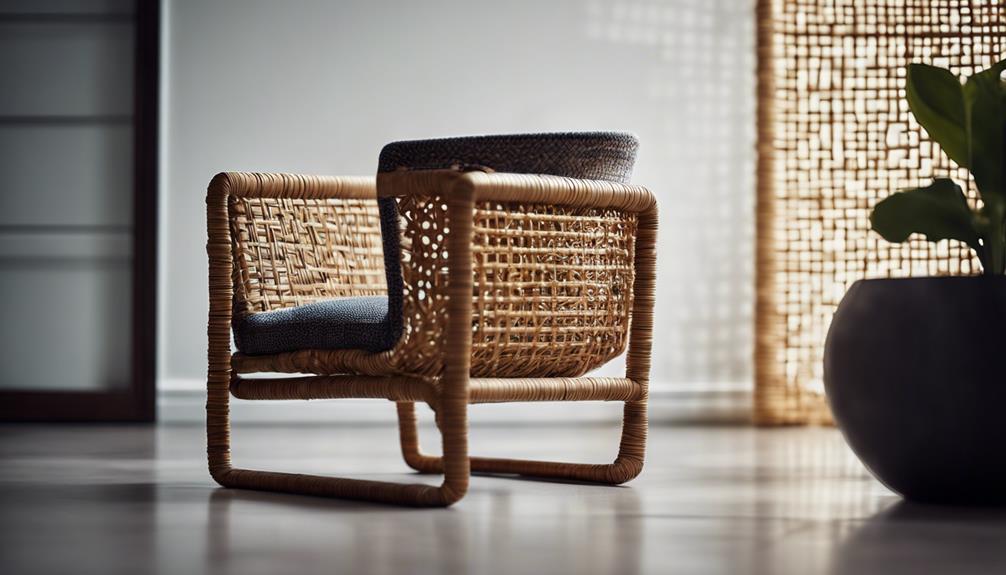
As we turn our gaze towards modern adaptations and uses, it's clear that caned furniture has seamlessly woven itself into contemporary interior design, marrying timeless elegance with functionality. The allure of caned pieces, from footstools to headboards, echoes through the halls of modern homes, where the blend of historical charm and present-day sophistication reigns supreme. This resurgence isn't merely about aesthetics; it's rooted in innovative applications and sustainability practices that cater to the eco-conscious consumer.
Contemporary designers draw inspiration from the past, yet their creations are anything but antiquated. They reimagine caned furniture with a gloss that not only enhances its durability but also elevates its status among interior trends. The lightness and sophistication of these designs speak to a refined taste that appreciates both the look and the legacy of caned weaving.
Sustainable harvesting of rattan underscores the commitment to eco-friendly design, ensuring that this age-old craft not only survives but thrives. It's a testament to how traditional techniques can adapt and flourish, guided by design inspirations that value both heritage and environmental stewardship. In this era of interior trends, caned furniture stands as a beacon of sustainability, innovation, and timeless beauty.
Frequently Asked Questions
What Is the History of Rattan Weaving?
I've learned that the history of rattan weaving stretches back to ancient times, evolving through centuries. Rattan cultivation and innovative weaving techniques have made it a staple in durable, stylish furniture, cherished worldwide.
What Are the Different Cane Weave Patterns?
I've discovered various cane weave patterns, each with unique durability and innovation. The herringbone and diamond patterns offer elegance and modern appeal, while the six-way pattern showcases intricate design, enhancing weave durability and pattern innovation.
What Are Some of the Traditional Designs Used in Rattan Weaving?
In the tapestry of traditional designs, the herringbone, diamond lattice, and checkerboard patterns stand out, weaving cultural significance and modern adaptations into each piece. These designs showcase not just beauty but a rich history.
What Is the History of Caning Furniture?
I've delved into caning furniture's history, finding its roots in ancient civilizations. Its cultural significance grew with modern adaptations, blending durability and style. This journey from practicality to iconic design fascinates me deeply.
Conclusion
In unraveling the intricate tapestry of rattan cane weaving, it's clear this craft isn't just about creating furniture; it's a rich narrative woven through time. From ancient burials to modern living rooms, the evolution of weaving techniques mirrors humanity's own progression. Rattan's versatility and sustainability have cemented its place in our cultural fabric. Like a river that adapts to the contours of the land, rattan weaving has flowed through history, continually reshaping to meet the aesthetic and functional demands of each era.

